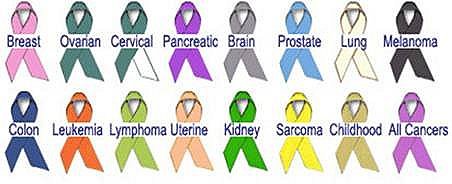

 Wikipedia Sitemap |
|
|  Useful Links 1 Useful Links 2 |

This week's column comes to you from my (Dr. Peter Kujtan's) colleague, Dr. Channy Muhn, who practises dermatology at the Dermetics Clinic (Dermetics, Centre for Advanced Skin Care and Cosmetic Surgery) in Burlington, Ontario, Canada. Dr. Muhn is a Canadian Board certified dermatologist and a Fellow of the Royal College of Physicians and Surgeons of Canada and an Assistant Clinical Professor of Medicine at McMaster University, Hamilton, Ontario, Canada.
The sun's rays are responsible for a lot of different types of skin damage. They cause hyperpigmentation (lentigos), increased redness of the face, an increase in the number and size of moles, dark pigmentation across the forehead and around the eyes (melasma), wrinkles and skin cancer.
We have all been taught that darker skin is healthier, but that only applies if you are born with darker colored skin. Otherwise, in every single person, with no exceptions, a tan or browning of the skin, means that your skin has received sun damage. For us dermatologists, a tan is a sign of cancer risk. Red, burnt skin is even worse.
Without a doubt, sunscreen is one of the most important things you can use for your skin. Of course, it helps to minimize sunburns if applied properly, but it is also tremendously important for preventing premature aging of the skin as well as decreasing your chances of developing specific skin cancers.
There are chemical and physical sunscreens. When choosing yours, be diligent about ensuring that it has the following: an SPF of 45 or greater and that it has broad spectrum UVA and UVB protection. Preferably, it should be a physical block sunscreen that contains ingredients such as titanium dioxide or zinc oxide. These tend not to be absorbed and have very little side effects with the skin in essence. These types of sunscreen block and reflect the sun's rays away from the skin.
Chemical sunscreens, simply put, are chemicals that absorb sun rays, and then change themselves into a different chemical compound. So, although there is minimal penetration of sun light into the skin, these sunscreens leave chemical products on your skin. There are more theoretical risks of allergy or negative skin reactions with these chemical sunscreens although still very unlikely.
Sunscreen needs to be applied generously first thing in the morning ALL YEAR ROUND. It should be reapplied if there is prolonged sun exposure outdoors. UVB rays tend to be stronger in the summer months and are responsible for burning the skin. UVA rays are present all year round, penetrating windows, and are responsible for damaging the skin, causing premature aging and wrinkles.
Your sunscreen should be applied as a moisturizer daily, but feel good on you skin and not clog the pores. You may have to try a number of different sunscreens until you find the right one for your skin.
Skin cancers are on the rise. They can grow large, penetrate deeply into the skin and sometimes spread to other organs. When isolated on the skin, treating them can result in significant destruction of the skin with scars and deformities.
When skin cancers spread, they can cause tremendous pain and take away the quality of life. Every day, many patients die from skin cancer. There are many types of skin cancers, some common and others not as frequent. Some of the more recognized skin cancers, such as basal cell cancer (BCC), squamous cell cancer (SCC) and melanoma, are related to sun exposure, but you would be surprised to see the many other types of cancer skin experts see.
At times, skin cancers can be painful, but mostly they are without symptoms. Usually, these are slow growing and can bleed. Itching is uncommon. BCC's and SCC's tend to grow slowly, can bleed easily and appear as fragile lesions that are unresolving.
Melanomas grow slowly, grow in width and occasionally in height and can be assessed using the ABCDE (Asymmetry, Borders, Color, Diameter, Evolution) rules. If the mole is asymmetrical, has irregular borders, multiple or dark colors, has a diameter greater than 5 mm, or is simply changing, then this should be assessed by your doctor immediately. Please visit www.dermetics.ca for additional information.

Related resources:
● Channy Y. Muhn, MD, FRCPC, Dermatologist from Dermetics.
● Helpful Websites. Selected resources from Melanoma Network of Canada.
● What Is Skin Cancer? What Are the Different Types of Skin Cancer? What Causes Skin Cancer? Who Is Most at Risk? Symptoms of Skin Cancer, Diagnosis, Stages of Skin Cancer, Treatment, Experimental Therapies, Can It Be Cured? Preventing Skin Cancer, Skin Cancer Glossary. From eHealthMD.
● Skin cancer from Wikipedia, the free encyclopedia.
● Sun tanning from Wikipedia, the free encyclopedia. "Sun tanning is the act of exposing the skin to ultraviolet (UV) radiation, for the purpose of darkening skin color ..."
● Skin Cancer from Family Doctor. What is skin cancer? Skin cancer is the most common form of cancer. Fortunately, it is usually one of the most curable types of cancer. What is melanoma? Symptoms. Causes and Risk Factors, Diagnosis and Tests. Treatment. Prevention.
● How Sunburns and Sun Tans Work by Marshall Brain. From HowStuffWorks.
● What do SPF numbers mean? By Melissa Jeffries. From HowStuffWorks. SPF = Sun Protection Factor (sun block rating).
● SPOT Skin Cancer quiz™ 8 questions from American Academy of Dermatology (AAD). Take this quiz to find out how much you know - or don't know - about skin cancer. "Sun exposure is the most preventable risk factor for all skin cancers, including melanoma."
● Sun Exposure from MedlinePlus. "UV rays can cause skin damage during any season or at any temperature. They can also cause eye problems, wrinkles, skin spots, and skin cancer ... Stay out of the sun when it is strongest (between 10 a.m. and 4 p.m.) ... Check your skin regularly for changes in the size, shape, color or feel of birthmarks, moles and spots. Such changes are a sign of skin cancer."
● Health effects of UV overexposure from SunWise Program, U.S. Environmental Protection Agency (EPA). "Major health problems linked to overexposure to UV radiation ... Skin cancer (Melanoma, Basal cell carcinomas, Squamous cell carcinomas), Other skin problems (actinic keratoses and premature aging of the skin), Cataracts and other eye damage, Immune system suppression."
● What's Your Sun-Safety IQ? Take the American Cancer Society's 9-question quiz and find out.
● A Death by Suntan at Age 26 by Stephanie Booth. Original article from Cosmopolitan, Oct. 2009. "For years, Glenna Kohl pursued a tan, both in the sun and in tanning beds - which new research shows are far deadlier than once thought."